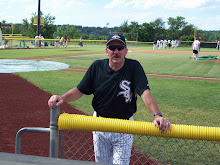The Five Essentials of Infield Play
Every infielder must strive to achieve the following. He must have:
1. The correct attitude
2. Excellent sensory perception
3. Good rhythm with all ground balls
4. Proper mechanics
5. The ability to make the plays.
Once he has developed these five areas, he must never settle for anything short of perfection.
Every infielder must want+ to be involved in all 21 outs. His ATTITUDE should be to demand that every ground ball be hit to him. He is so confident in his fielding abilities that he knows every ground ball hit to him will result in an out. Therefore, if 21 ground balls are hit to him, no errors will be committed, and his team will be in a great position to win. He takes every ground ball personally, as if he were in a prizefight for the championship of the world. His confident attitude forces him to believe that there is no ground ball which can get by him, that he will get to the ball and throw the runner out. This is a highly competitive attitude, which puts the infielder in the correct frame of mind. Never should an infielder take on the attitude of fear or apprehension; rather, he should have an attitude of confidence and courage.
The jump an infielder gets on a batted ball is directly proportional to his level of SENSORY PERCEPTION. A good infielder will read a batted ball with both sight and sound. This ability enables the infielder to gauge the speed and direction of the batted ball. Most infielders will move, even on balls that are swung on and missed. This is due to their visual perception of pitch location and bat angle. The sound of the ball coming off the bat allows the infielder to make judgment of how fast or slow the ball may be hit and then react accordingly. In order to take full advantage of both sight and sound, an infielder must have a solid pre-pitch mentality and be focused on the hitting zone. Infielders must practice this during batting practice to get the full effect of using both sight and sound.
Developing a good RHYTHM WITH GROUND BALLS could be taught as a mechanic of fielding but has been separated from that section because of its overwhelming importance. Arriving in the proper position to field a ground ball requires a sense of timing. The terms "arriving on time" or "getting instinct with the ball" are good pictures of what actually needs to occur. There are three different hops which an infielder might field; long hop, short hop, and in-between hop. The most desirable hops to field are long hops or short hops with in-between hops being the hop most likely to be misfielded. Although sensory perception plays a large role in the rhythm phase, once the speed of the ground ball has been gauged, agility and timing must take over. This allows the infielder to get to and field the more desirable hops. An infielder accomplishes this by slowing down (shuffling his feet) or speeding up (taking a more direct approach to the ball); this process is referred to as "dancing with the ball." Once the fielder has arrived, with good timing, he will field and secure the ball.
Proper FIELDING MECHANICS must take place throughout the entire fielding process. This article will not cover the intricacies of fielding mechanics, but will list the major points of the fielding process.
1. Ready position
2. Check step or break down
3. Getting outside of the ball
4. Right-left field (for a right-handed fielder)
5. Go down and get the ball, with the hands at 7 & 2 o'clock
6. Right-left throw (for a right-handed fielder)
The methods infielders use to approach and address the ball may be different. However, the infielder must have good feet and good hands or his fielding will be based on luck. Fielding mechanics are taught in many different ways, but a good infielder always finds a way to get into a good athletic position to field the ball.
The bottom line for any infielder is to get to the ball and MAKE THE PLAY. He must relax, feel confident, and explode. There is no time in a game to think back on the how “To's” of fielding. The infielder should react only to the situation and conquer it. This moment is the time all the hard work in practice pays off. All the thinking, repetition, and focus should take over and allow the infielder to accomplish only one thing, MAKING THE PLAY!
Every infielder must be successful on every ground ball hit to him on these five essentials. Baseball is a repetitious sport, and a good work ethic and practice regimen are the only ways to become truly proficient in these five areas. Every infielder must take pride in his craft. Becoming proficient in these five areas will allow him to further his mental and physical abilities.
Subscribe to:
Post Comments (Atom)

No comments:
Post a Comment